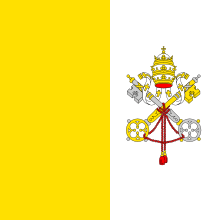Giuseppe Valerga
Giuseppe Valerga (9 April 1813 – 2 December 1872) was the Latin Patriarch of Jerusalem from 1847 until his death in 1872; the first resident such since the Crusades. He held the title of one of the fathers of the First Vatican Council. In addition, he was Grand Master of the Order of the Holy Sepulchre.

Biography
Valerga was born in Loano. In 1836 he was ordained a priest. He studied at the Albenga Seminary and at Sapienza University of Rome. Prior to receiving his appointment at Jerusalem, Valerga had been part of Propaganda Fide and had also worked with the Chaldean Catholic Church, in what is today Iraq.
In his efforts to reestablish the Latin Patriarchate, Valerga worked closely with the Cimowskys. He strove to make the Catholic faith the religion of the Palestinian villagers.
While serving as Latin Patriarch of Jerusalem, he was the last individual to have been dubbed as a Knight of the Holy Sepulchre by the Franciscan Custody of the Holy Land 16 January 1848.[1] He was subsequently appointed Grand Master of the Order of the Holy Sepulchre at its reconstitution by Pope Pius IX in 1868.[2]
Co-Cathedral
Valerga envisioned the importance of providing a new church to the Latin Patriarchate of Jerusalem. The Co-Cathedral of the Most Holy Name of Jesus was constructed and consecrated on February 11, 1872, the 25th anniversary of his Patriarchal consecration. The Co-Cathedral has continued to be the principal or “mother” church of the Diocese of Jerusalem, and the church in which the Latin Patriarch of Jerusalem has his official chair (cathedra).
Distinctions

References
- http://oeuvres-saintsepulcre.fr/Presentation-de-l-Ordre
- "GCatholic.org". Retrieved 28 December 2014.
Sources
- Catholic Hierarchy entry
- Chapter on Valerga at the Wayback Machine (archived October 28, 2009), geocities.com
- The Co-Cathedral of Jerusalem
| Catholic Church titles | ||
|---|---|---|
| Preceded by Custody of the Holy Land of the Order of Friars Minor |
of the Order of the Holy Sepulchre 1847–1872 |
Succeeded by Giovanni Vincenzo Bracco |